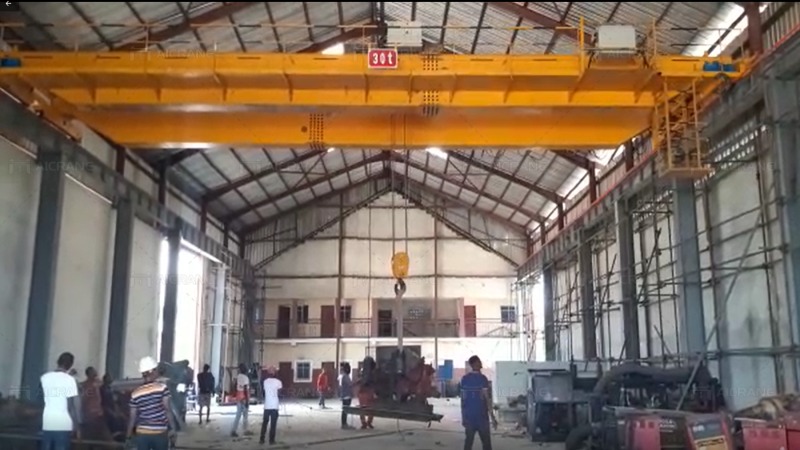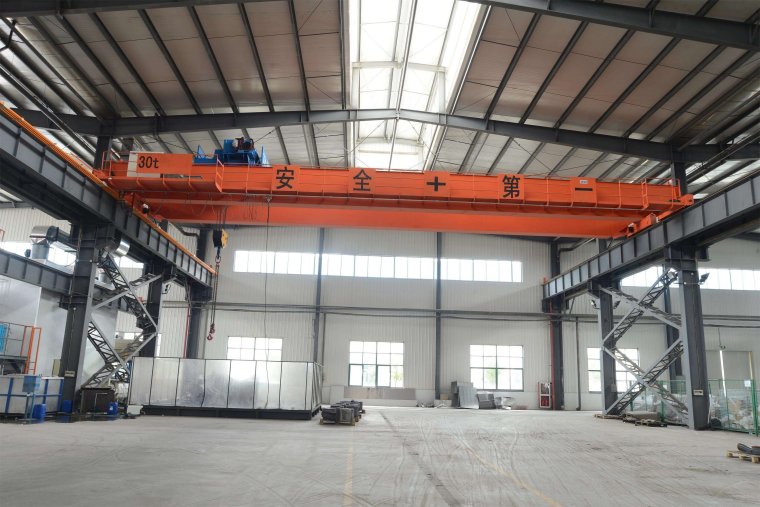Overhead workshop cranes are essential tools for various industries, providing efficient lifting and moving capabilities for heavy loads in confined spaces. Their design allows for optimal space utilization and ease of access to equipment, making them invaluable in manufacturing, construction, maintenance, and assembly tasks. When it comes to precision lifting, ensuring the safe and efficient operation of overhead workshop cranes is paramount. This article will explore best practices and tips for using overhead cranes to achieve precision lifting while maintaining safety and efficiency.

Understanding Overhead Workshop Cranes
Overhead workshop cranes are typically classified into two main types: single girder and double girder cranes. Single girder cranes consist of one beam that supports the hoist and trolley, making them ideal for lighter loads and shorter spans. Double girder bridge cranes, on the other hand, have two parallel beams and can handle heavier loads and longer spans, making them suitable for more demanding applications.
Both types of cranes are equipped with a hoisting mechanism that raises and lowers the load, allowing operators to move materials smoothly across the workspace. The effectiveness of these cranes in precision lifting depends on several factors, including proper setup, maintenance, and operator training.
Best Practices for Precision Lifting
1. Conduct Thorough Training for Operators
Proper training is crucial for the safe and efficient operation of overhead workshop cranes. Operators should be well-versed in crane operation, load management, and safety protocols. Training programs should cover:
- Crane controls and functions: Understanding how to operate the crane’s controls effectively is essential for precision lifting.
- Load handling techniques: Operators should learn how to properly attach and detach loads, ensuring secure and stable lifting.
- Safety procedures: Training must include safety protocols, such as the use of personal protective equipment (PPE), recognizing hazards, and emergency procedures.
Regular refresher courses are also beneficial to keep operators updated on best practices and any new technologies or techniques.

2. Perform Routine Maintenance and Inspections
Regular maintenance is vital to ensure that overhead workshop cranes operate safely and efficiently. A well-maintained bridge crane is less likely to experience breakdowns or malfunctions that could lead to accidents. Follow these maintenance practices:
- Daily inspections: Operators should conduct visual inspections before each shift to check for signs of wear, loose components, and any visible damage to the crane or hoisting equipment.
- Scheduled maintenance: Develop a maintenance schedule that includes lubrication, parts replacement, and thorough inspections according to the manufacturer’s recommendations.
- Load testing: Regularly perform load tests to verify that the crane can safely handle its rated capacity. Document the results and address any discrepancies immediately.
3. Utilize Proper Lifting Techniques
Precision lifting involves more than just raising and lowering loads; it requires careful planning and execution. Here are some tips for effective lifting:
- Know the load weight: Before lifting, determine the load’s weight and ensure it does not exceed the crane’s rated capacity.
- Use appropriate lifting equipment: Select the right hoisting equipment, such as slings or hooks, that are rated for the specific load. Ensure they are in good condition and properly secured.
- Balance the load: Ensure that the load is balanced before lifting. An unbalanced load can swing or tilt during movement, leading to accidents.
- Use slow, controlled movements: When lifting or moving a load, use slow and steady motions. Quick movements can lead to instability and increase the risk of accidents. If you are interested in knowing more about lifting equipment, you can check Aicrane lifting solutions to know details and choose a suitable one.
4. Implement Safety Protocols
Safety should always be a top priority when operating overhead workshop cranes. Implement the following safety measures:
- Establish exclusion zones: Set up designated areas around the crane’s operating path to keep personnel clear of potential hazards during lifting operations.
- Use spotters: When moving heavy loads, have a designated spotter guide the operator. The spotter can help ensure that the path is clear and assist in precise positioning.
- Use warning signals: Implement a system of verbal or hand signals to communicate between the operator and ground personnel during lifting operations.
- Emergency procedures: Develop and communicate clear emergency procedures for crane operations. Ensure all operators and staff know how to respond to emergencies.
5. Leverage Technology for Precision Control
Modern overhead workshop cranes often come equipped with advanced technologies that enhance precision and safety. Consider incorporating the following technologies:
- Load monitoring systems: These systems can provide real-time data on the weight of the load being lifted, preventing overloading and improving safety.
- Anti-sway systems: Anti-sway technology helps stabilize loads during movement, minimizing swinging and improving precision.
- Remote controls: Wireless remote controls allow operators to manage lifting operations from a safe distance, enhancing visibility and reducing the risk of accidents.
Overhead workshop cranes are powerful tools for precision lifting in various industries. By implementing best practices for training, maintenance, lifting techniques, safety, and technology, operators can enhance the efficiency and safety of their lifting operations. A commitment to safety and continuous improvement not only protects workers but also maximizes productivity and extends the lifespan of the crane. Properly used, overhead workshop cranes can transform the way materials are handled, leading to a more efficient and effective workplace.